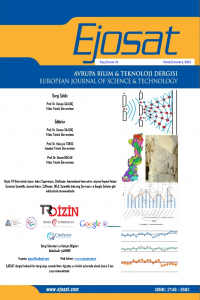Öz
Earthquake locations reflect seismicity of a certain region. Earthquake location is an important parameter that is used in seismic hazard and risk analysis studies. In order to define and verify earthquake locations multidiciplinary methods are applied. These are instrumental seismology, historical seismology and archaeoseismological methods. Instrumental seismological data are obtained by seismometers since 1900. Historical earthquake data are acquired from observations and records of witnesses, artifacts, geological observations, historical seismology, paleoseismology and archeoseismological studies. Historical earthquakes provide essential information in regions where fault locations are not defined very well. In this study, methods used in preparation of historical earthquake catalogs are reviewed.
Anahtar Kelimeler
Earthquake Location Macroseismic Data Earthquake Catalog Historical Seismology
Kaynakça
- Ambraseys, N. N. (1971). Value of historical records of earthquakes. Nature, 232(5310), 375-379.
- Ambraseys, N. N., & White, D. (1997). The seismicity of the eastern Mediterranean region 550–1 BC: A re-appraisal. Journal of Earthquake Engineering, 1(04), 603-632.
- Ambraseys, N. N., Melville, C. P., & Adams, R. D. (2005). The seismicity of Egypt, Arabia and the Red Sea: a historical review. Cambridge university press.
- Ambraseys, N. N. (2006). Earthquakes and archaeology. Journal of Archaeological Science, 33(7), 1008-1016.
- Caputo, R., & Helly, B. (2008). The use of distinct disciplines to investigate past earthquakes. Tectonophysics, 453(1-4), 7-19.
- Guidoboni, E. (2002). Historical seismology: the long memory of the inhabited world. In International Geophysics (Vol. 81, pp. 775-cp1). Academic Press.
- Hinzen, K. G. (2011). Archaeoseismology. Encyclopedia of Solid Earth Geophysics, edited by HK Gupta, 11-15.
- Hinzen, K. G., & SchUtte, S. (2003). Evidence for earthquake damage on Roman buildings in Cologne, Germany. Seismological Research Letters, 74(2), 124-140.
- Pavlides, S., & Caputo, R. (2004). Magnitude versus faults' surface parameters: quantitative relationships from the Aegean Region. Tectonophysics, 380 (3-4), 159-188.
- La Rosa, V. (1995). A hypothesis on earthquakes and political power in Minoan Crete.
- Nur, A., & Burgess, D. (2008). Apocalypse: earthquakes, archaeology, and the wrath of God. Princeton University
Öz
Deprem konumları belirli bir bölgenin sismisitesini yansıtır. Deprem konumu sismik tehlike ve risk analizi çalışmalarında kullanılan önemli bir parametredir. Deprem konumlarının belirlenmesinde ve doğrulanmasında çok disiplinli teknikler uygulanır. Bunlar aletsel sismoloji, tarihsel sismoloji ve arkeosismolojik yöntemlerdir. Aletsel sismolojik veriler 1900'lü yıllardan itibaren sismik cihazlarla elde edilen verilerdir. Tarihsel deprem verileri, depremlere tanık olan kişilerin gözlemleri ve kayıtları, insan yapımı eserler, jeolojik gözlemler, tarihsel sismoloji, paleosismoloji ve arkeosismoloji çalışmaları sonucunda elde edilir. Tarihsel depremler fay konumlarının günümüzde tam olarak tanımlanamadığı bölgelerde önemli bilgiler sağlar. Bu çalışmada tarihsel deprem kataloglarının hazırlanması amacıyla kullanılan yöntemler derlenmiştir.
Anahtar Kelimeler
Kaynakça
- Ambraseys, N. N. (1971). Value of historical records of earthquakes. Nature, 232(5310), 375-379.
- Ambraseys, N. N., & White, D. (1997). The seismicity of the eastern Mediterranean region 550–1 BC: A re-appraisal. Journal of Earthquake Engineering, 1(04), 603-632.
- Ambraseys, N. N., Melville, C. P., & Adams, R. D. (2005). The seismicity of Egypt, Arabia and the Red Sea: a historical review. Cambridge university press.
- Ambraseys, N. N. (2006). Earthquakes and archaeology. Journal of Archaeological Science, 33(7), 1008-1016.
- Caputo, R., & Helly, B. (2008). The use of distinct disciplines to investigate past earthquakes. Tectonophysics, 453(1-4), 7-19.
- Guidoboni, E. (2002). Historical seismology: the long memory of the inhabited world. In International Geophysics (Vol. 81, pp. 775-cp1). Academic Press.
- Hinzen, K. G. (2011). Archaeoseismology. Encyclopedia of Solid Earth Geophysics, edited by HK Gupta, 11-15.
- Hinzen, K. G., & SchUtte, S. (2003). Evidence for earthquake damage on Roman buildings in Cologne, Germany. Seismological Research Letters, 74(2), 124-140.
- Pavlides, S., & Caputo, R. (2004). Magnitude versus faults' surface parameters: quantitative relationships from the Aegean Region. Tectonophysics, 380 (3-4), 159-188.
- La Rosa, V. (1995). A hypothesis on earthquakes and political power in Minoan Crete.
- Nur, A., & Burgess, D. (2008). Apocalypse: earthquakes, archaeology, and the wrath of God. Princeton University
Ayrıntılar
| Birincil Dil | Türkçe |
|---|---|
| Konular | Mühendislik |
| Bölüm | Makaleler |
| Yazarlar | |
| Yayımlanma Tarihi | 31 Ocak 2021 |
| Yayımlandığı Sayı | Yıl 2021 Sayı: 21 |


